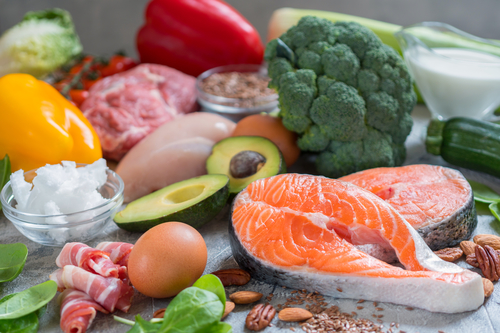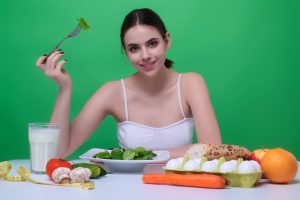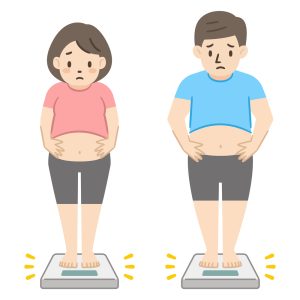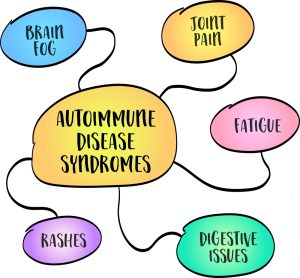 For Holiday Stress, these practical strategies can help you stay grounded, protect your well-being, and enjoy the season with more intention.
For Holiday Stress, these practical strategies can help you stay grounded, protect your well-being, and enjoy the season with more intention.
There are Tips to Handle Expectations, Plan Ahead, Share the Work, Protect you Time and Energy, etc., etc.

Contact Us chris@mcvitamins.com
 For Holiday Stress, these practical strategies can help you stay grounded, protect your well-being, and enjoy the season with more intention.
For Holiday Stress, these practical strategies can help you stay grounded, protect your well-being, and enjoy the season with more intention.
There are Tips to Handle Expectations, Plan Ahead, Share the Work, Protect you Time and Energy, etc., etc.
 Recent research is uncovering a surprising link between gut health and special needs children. Scientists are exploring how the bacteria living in the digestive system, known as the gut microbiota, may affect brain function, behavior, and overall development.
Recent research is uncovering a surprising link between gut health and special needs children. Scientists are exploring how the bacteria living in the digestive system, known as the gut microbiota, may affect brain function, behavior, and overall development.
Learn more at Gut Health and Special Needs Children Research
 Your gut microbiome is home to trillions of microorganisms, including bacteria, fungi, and yeasts, that are vital to your overall well-being. These microbes have a profound influence on many aspects of your health, from digestion and nutrient absorption to immunity, mood regulation, metabolism, and even weight management.
Your gut microbiome is home to trillions of microorganisms, including bacteria, fungi, and yeasts, that are vital to your overall well-being. These microbes have a profound influence on many aspects of your health, from digestion and nutrient absorption to immunity, mood regulation, metabolism, and even weight management.
When your microbiome is in balance, it helps maintain optimal health. However, imbalances can lead to digestive problems, inflammation, and long-term issues like metabolic disorders. The good news? Your diet and lifestyle choices play a big role in shaping your microbiome. By understanding how to care for it, you can support your gut health and improve your quality of life.
Read more about this at
 Understanding the warning signs of poor gut health is key to taking control of your overall well-being. An unhealthy gut creates all sorts of health problems.
Understanding the warning signs of poor gut health is key to taking control of your overall well-being. An unhealthy gut creates all sorts of health problems.
Here are the common indicators of gut imbalance—and simple steps you can take to improve your digestive health naturally.
 When metabolism is sluggish, it affects far more than weight or blood sugar. It can also impair focus, memory, attention, and overall brain function. The good news is that with the right nutrition, metabolic health can be supported and even improved.
When metabolism is sluggish, it affects far more than weight or blood sugar. It can also impair focus, memory, attention, and overall brain function. The good news is that with the right nutrition, metabolic health can be supported and even improved.
Nutrition as the Foundation of Health: What Are the Key Principles for Metabolic Health?
 There are a lot of studies done that show that a large percentage of Special Needs Children have metabolic dysfunction. If those problems exist, addressing them would improve a child’s quality of life.
There are a lot of studies done that show that a large percentage of Special Needs Children have metabolic dysfunction. If those problems exist, addressing them would improve a child’s quality of life.
So, how do you know if this is the case? What symptoms are there of metabolic dysfunction?
Here is an article regarding the conditions and symptoms that indicate metabolic dysfunction. Symptoms of Metabolic Dysfunction
 Did you know that for many of these kids, there could be a hidden problem affecting their health—something called metabolic dysfunction? You’ve probably heard the word “metabolism” before, but what does it really mean for a child’s health?
Did you know that for many of these kids, there could be a hidden problem affecting their health—something called metabolic dysfunction? You’ve probably heard the word “metabolism” before, but what does it really mean for a child’s health?
Belly fat isn’t just about how you look—it’s often a sign that your metabolism isn’t working as it should. Abdominal obesity is one of these symptoms that tells you that the metabolism has been impaired. It’s a symptom.
Read: Belly Fat is a Warning Sign
 Your immune system is your body’s built-in security team. It’s designed to spot anything that doesn’t belong (like viruses, bacteria, or toxins) and send out white blood cells to neutralize the threat.
Your immune system is your body’s built-in security team. It’s designed to spot anything that doesn’t belong (like viruses, bacteria, or toxins) and send out white blood cells to neutralize the threat.
But sometimes, that security team gets confused. Instead of protecting you, it starts attacking your own healthy cells. That’s what happens in autoimmune disorders — and there are more than 80 different types of them.
Learn more and what things you can do to address this.
 Obesity, especially belly fat, is a symptom of the Metabolic Syndrome, which is a cluster of conditions that tell you something isn’t right with your metabolism.
Obesity, especially belly fat, is a symptom of the Metabolic Syndrome, which is a cluster of conditions that tell you something isn’t right with your metabolism.
There seems to be a dangerous trend. People are seeking quick metabolic solutions to weight loss through medications
How does metabolism really affect your weight?
Read more at Obesity or Belly Fat and Metabolism
 Metabolism refers to the chemical processes within your cells that convert food and oxygen into energy. This energy powers everything your body does—from breathing and digesting to thinking and cell regeneration. But during this energy-making process, your body also produces byproducts—one of which is free radicals.
Metabolism refers to the chemical processes within your cells that convert food and oxygen into energy. This energy powers everything your body does—from breathing and digesting to thinking and cell regeneration. But during this energy-making process, your body also produces byproducts—one of which is free radicals.
Free radicals are your body’s version of exhaust fumes coming from a car engine.
Antioxidants address this problem, so free radicals don’t damage your cells and organs.
Learn more about free radicals and antioxidants, and why we recommend Camel Milk for its Antioxidant Properties